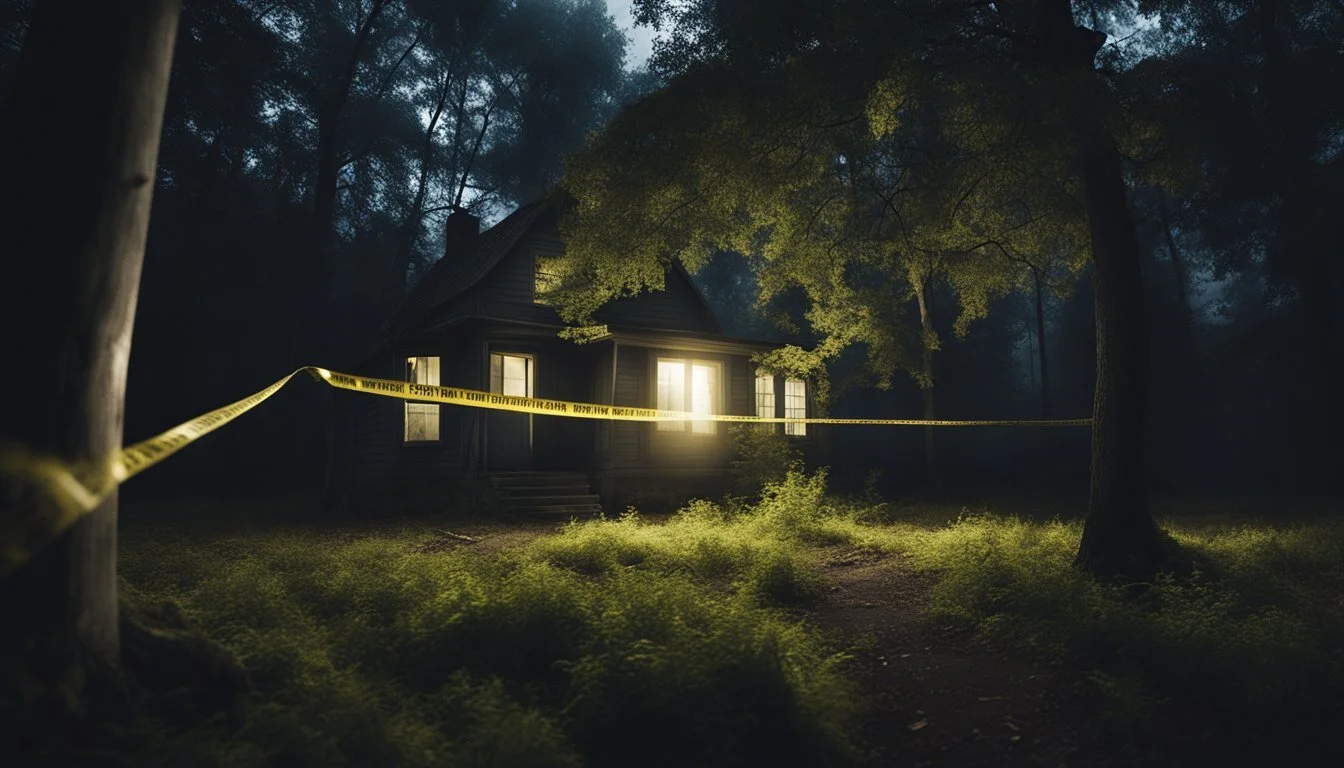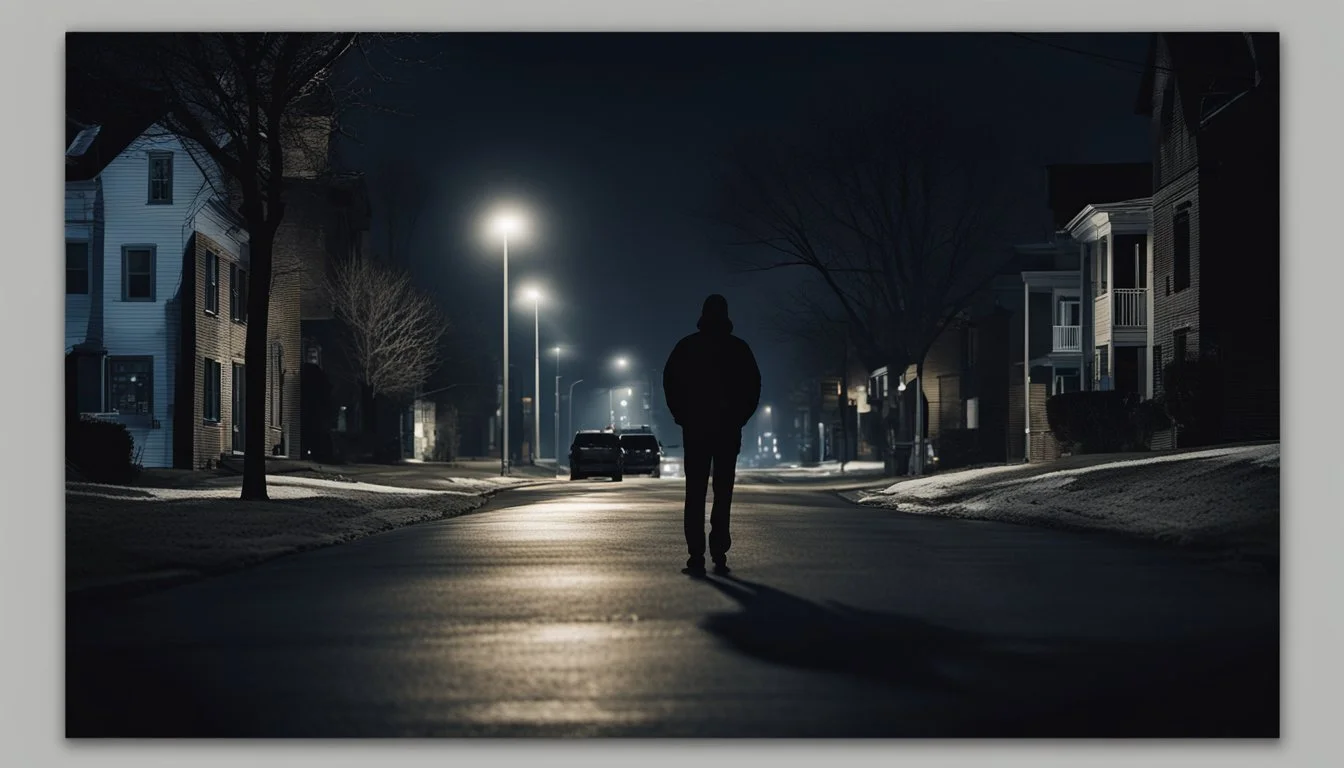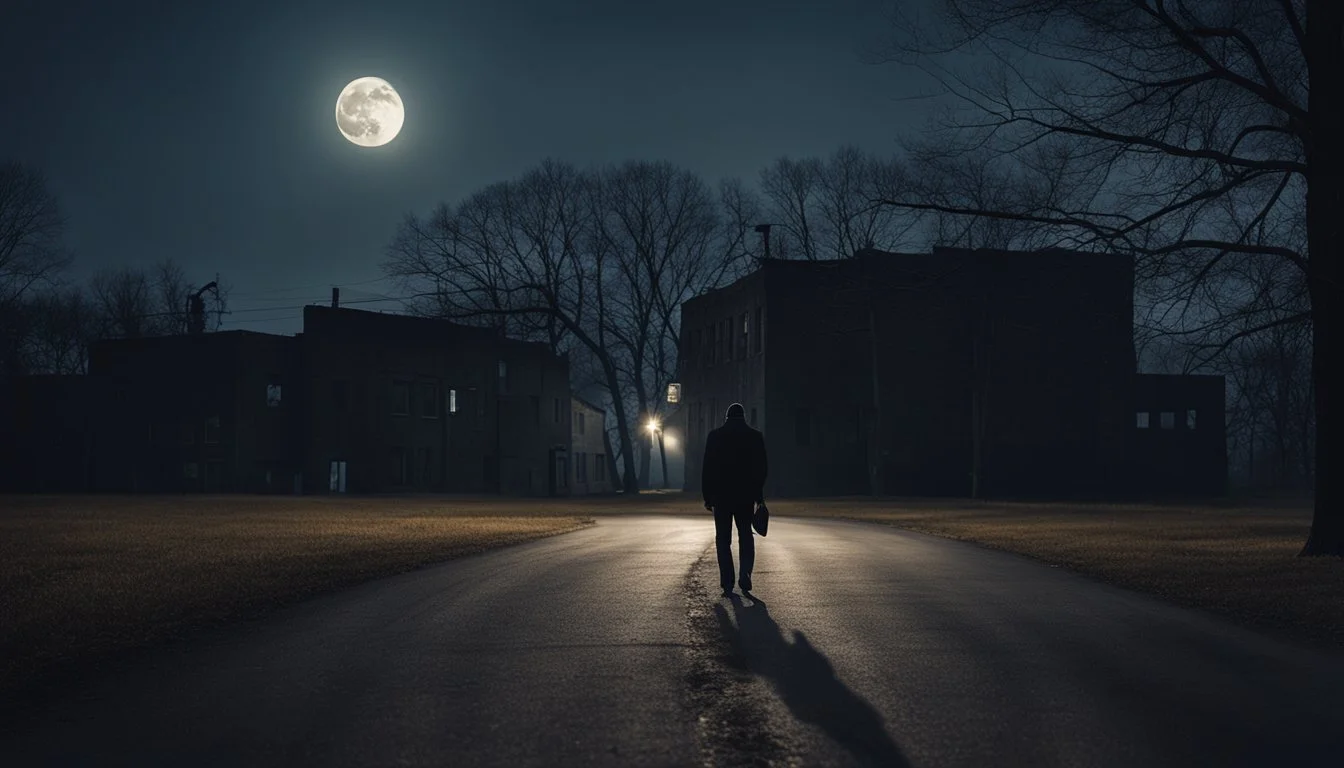5 Haunting True Crime Documentaries Set in Ohio
Unraveling the State's Darkest Mysteries
Ohio has a long and storied history, marked by some of the most gripping true crime cases in the United States. These haunting documentaries capture the darker side of Ohio, portraying real-life events with a chilling precision that keeps viewers on the edge of their seats. These films not only explore the facts but also delve into the human stories behind the crimes.
From terrifying cults to mysterious disappearances, Ohio's true crime documentaries offer a wide range of spine-tingling tales. The state’s unique blend of urban and rural settings provides the perfect backdrop for these unsettling stories, adding an extra layer of eeriness to each narrative.
1) The Phantom of Columbus: The Unsolved Case
The Phantom of Columbus is a chilling true crime documentary that dives into one of Ohio’s most baffling cold cases. Set in the heart of Columbus, this documentary explores the brutal murder of two university students in 1970.
The case remains unsolved, with the killer never identified, leaving a lasting impact on the community.
The investigative methods and theories presented make this film a gripping watch.
With limited evidence and the passage of time, the mystery has only deepened. The documentary includes interviews with law enforcement and those close to the victims, painting a detailed picture of the era and the crime itself.
The Phantom of Columbus (2024) provides a meticulous look at a case that still haunts Ohioans.
2) Crying for Justice: The Cleveland Kidnappings
The Cleveland Kidnappings refers to a horrific case where Ariel Castro held three women captive for over a decade in his Cleveland home. This chilling documentary delves into the details of their abduction, captivity, and eventual escape in May 2013.
Amanda Berry, Gina DeJesus, and Michelle Knight were kidnapped between 2002 and 2004. During their captivity, they endured unimaginable suffering and were subjected to ongoing abuse. The documentary highlights their resilience and courage.
The film explores how these women were discovered after Amanda Berry managed to escape and alert the authorities. Their captor, Ariel Castro, was subsequently arrested and sentenced. The documentary also focuses on their recovery and efforts to rebuild their lives.
This disturbing yet compelling true crime tale sheds light on the strength of the survivors and the failures that allowed Castro's crimes to go unnoticed for so long.
For those interested in the detailed account of these events, the 2013 documentary "The Cleveland Captives: What Really Happened?" provides an in-depth look into this dark chapter in Ohio's history. IMDB
3) Ohio's Hidden Secrets: The Piketon Family Murders
The Piketon Family Murders, also known as the Pike County Murders, shocked the small community of Pike County, Ohio. On the night of April 21-22, 2016, eight members of the Rhoden family were brutally murdered in what was later revealed to be an execution-style killing spree.
The investigation into the murders uncovered a web of violence, betrayal, and secrets. The motive and details of the case were explored in the documentary "The Pike County Murders: A Family Massacre" (2023). During the trials, stunning testimonies revealed the involvement of another family, shedding new light on the dark underbelly of this rural area.
The trials brought to the forefront the deep connections between the victims and perpetrators, revealing shocking secrets. This case became the largest murder investigation in Ohio's history, drawing national attention and extensive media coverage.
For those interested in true crime stories that delve into the complexities of human relationships and the darker aspects of small-town America, this documentary provides a haunting glimpse into the sinister side of Pike County.
For more information, visit the IMDB page.
4) The Dayton Strangler: Terror in the Buckeye State
The Dayton Strangler remains one of Ohio's most notorious unsolved mysteries. Operating from 1900 to 1909, this unidentified serial killer was responsible for the deaths of five women and one man in Dayton, Ohio.
The victims were strangled, drawing significant media attention and public fear. Despite a massive manhunt and the arrest of multiple suspects, the case remains officially unsolved.
The lack of modern forensic techniques in the early 20th century made the investigation challenging. Missteps in the investigation included the wrongful conviction of at least one suspect.
For those interested in learning more about this chilling case, check the documentary or the Wikipedia page on the Dayton Strangler for further details.
The Dayton Strangler - Wikipedia
5) In Cold Blood: The Chilling Story of Dr. Sam Sheppard
The case of Dr. Sam Sheppard remains one of America's most infamous and controversial. In 1954, Dr. Sheppard's wife, Marilyn, was found brutally murdered in their Bay Village, Ohio home. Dr. Sheppard was quickly arrested and convicted of the crime, despite his consistent claims of innocence.
Years later, new forensic techniques cast doubt on Sheppard's guilt. In 1966, the Supreme Court overturned his conviction due to prejudicial media coverage and inadequate defense. Dr. Sheppard was retried and acquitted in 1966, but his reputation never fully recovered.
The case inspired the iconic TV series "The Fugitive" and was revisited with fresh DNA evidence in 1997. This review ultimately pointed toward Sheppard's potential innocence, redirecting suspicion toward an unknown intruder.
For a detailed exploration of this complex case, the documentary In Cold Blood, released in 1996, provides a gripping look into the chilling events and the subsequent legal battles. This documentary delves deep into the courtroom drama and the persistent questions surrounding the murder, making it a must-watch for true crime enthusiasts.
The Impact of True Crime Documentaries on Society
True crime documentaries have penetrated popular culture, sparking crucial conversations and raising awareness about crime and justice. They hold significant appeal due to their gripping narratives and psychological impact on viewers, and they can even contribute to solving real crimes.
Understanding the Appeal of True Crime
True crime documentaries captivate audiences with their mix of real events, suspense, and intricate details of criminal cases. People are drawn to the genre because it provides a dramatic, yet factual, exploration of human nature and societal flaws. This fascination is often fueled by a desire to understand the motives behind criminal behavior and a curiosity about the criminal justice system.
The psychological thrill, combined with the educational aspect, makes these documentaries compelling. Viewers get an inside look at police investigations, courtroom proceedings, and sometimes, the criminal's own psyche. This deep dive into real-life mysteries and tragedies keeps audiences hooked.
Psychological Effects on Viewers
Watching true crime documentaries can have notable psychological effects. Desensitization is a concern, where repeated exposure to violence might make viewers more tolerant of violent acts. This could lead to a diminished emotional response over time.
Another aspect is fear and anxiety. Engaging with stories of real-life crime may heighten viewers' sense of vulnerability and fear of becoming victims themselves. Despite this, some people find a certain comfort in understanding how criminals are caught and justice is served, which can provide a sense of security.
Influence on Crime Solving
True crime documentaries can also play a role in real-world crime solving. By bringing attention to cold cases or unsolved crimes, these documentaries can generate public interest and lead to new tips or evidence.
For instance, the popularity of certain cases can lead to the reopening of investigations. Fresh public interest can motivate law enforcement to take another look at stalled cases, sometimes resulting in breakthroughs that might not have happened otherwise. Documentaries serve as an additional tool to solve crimes by engaging the community in the pursuit of justice.
Historical Context of Crime in Ohio
Ohio's crime history is shaped by significant and shocking events, socioeconomic factors leading to criminal behavior, and the evolution of law enforcement and judicial practices in the state.
Notable Crimes in Ohio's History
Ohio has seen its share of high-profile crimes that have left a lasting impact. One key incident was the Cleveland Torso Murders during the 1930s, with an unknown serial killer dismembering victims and discarding their remains. Another infamous crime was the Kingsbury Run Murders, marked by the discovery of mutilated bodies in Cleveland.
More recent is the Pike County Massacre in 2016. Eight family members were brutally murdered in their homes, an event that shocked the nation. These crimes have brought extensive media coverage and public attention to Ohio's criminal landscape.
Socioeconomic Factors Influencing Crime
Economic disparities and social issues have significantly influenced crime rates in Ohio. Industrial decline in cities like Cleveland and Youngstown has led to increased unemployment and poverty, contributing to higher crime rates.
Urban decay, lack of educational opportunities, and insufficient community resources exacerbate these issues. Drug abuse, particularly the opioid crisis, has also been a critical factor, leading to increased criminal activity such as theft and violent crimes as individuals seek ways to support their addiction.
Law Enforcement and Judicial Responses
Ohio's response to crime has evolved to address these pressing issues. The establishment of specialized units, such as the Cleveland Police Homicide Unit, showcases efforts to tackle violent crimes more effectively. The state's adoption of advanced forensic technologies has improved crime-solving rates.
Judicially, Ohio has implemented various reforms aimed at reducing recidivism. Programs focusing on rehabilitation, mental health treatment, and drug courts are designed to prevent repeat offenses. These measures reflect a broader trend toward balancing punitive action with efforts to address underlying causes of criminal behavior.







